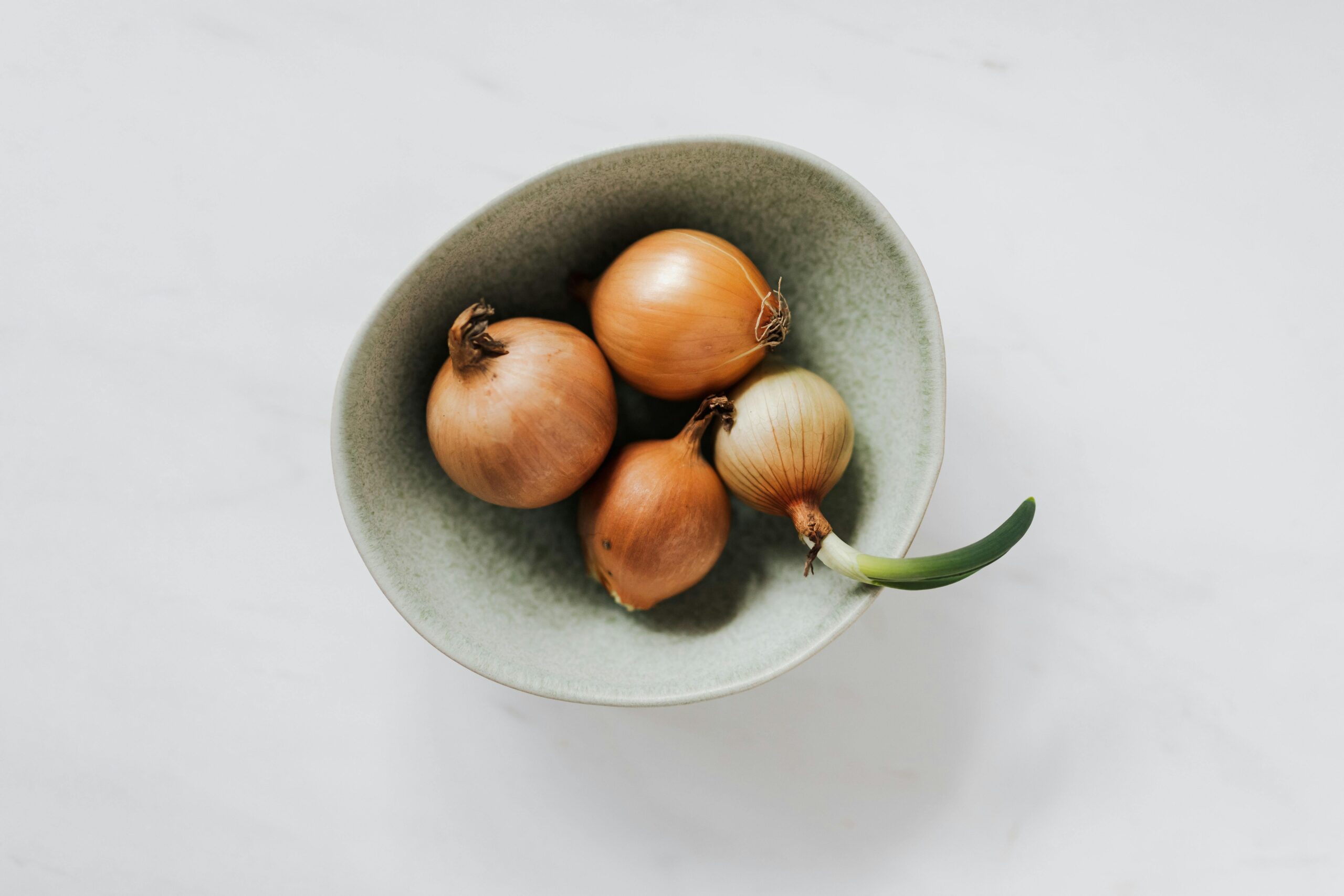Proper onion storage is essential for maintaining flavor, texture, and longevity in your kitchen. Whether you’re a home cook, gardener, or meal prepper, understanding the best methods for storing onions can help you minimize waste and enjoy fresh ingredients for longer. This guide will provide you with actionable tips for storing whole, cut, and homegrown onions, ensuring you get the most out of this versatile vegetable.
Why Proper Onion Storage Matters
Onions are a staple in many kitchens, offering flavor and nutrition. However, improper storage can lead to spoilage, affecting both taste and texture. By following the best practices for onion storage, you can extend their shelf life and maintain their quality, saving both money and effort in meal preparation.
Best Way to Store Whole Onions
Storing whole onions correctly is key to keeping them fresh for an extended period. Here’s how to do it:
Temperature and Humidity
- Store onions in a cool, dark place with temperatures between 45°F and 55°F (7°C to 13°C).
- Avoid high humidity, which can lead to mold and sprouting.
Containers
- Use mesh bags, baskets, or open crates to allow for air circulation.
- Avoid plastic bags, which trap moisture and promote decay.
Location
- Ideal locations include a pantry, cellar, or a well-ventilated kitchen cupboard.
- Keep away from direct sunlight to prevent sprouting and spoilage.
How to Store Cut or Peeled Onions
Once you’ve cut or peeled an onion, proper storage becomes crucial to prevent spoilage and strong odors. Follow these guidelines:
Refrigerator Storage
- Place cut onions in an airtight container or wrap them tightly in plastic wrap.
- Store in the refrigerator to maintain freshness; they can last up to 7-10 days.
Freezer Storage
- For longer storage, freeze chopped onions. Spread them on a baking sheet to freeze individually before transferring to a freezer-safe bag.
- Frozen onions can be used directly in cooking without thawing.
Storing Different Types of Onions
Different onion varieties have unique storage needs. Understanding these can help you choose the best methods for each type.
Red Onions
- Store in a cool, dark place similar to yellow onions.
- They have a shorter shelf life and should be used within a few weeks.
Yellow Onions
- These are the most versatile and can be stored in the same manner as whole onions.
- They typically last several months when stored properly.
White Onions
- White onions store similarly to yellow onions but may have a slightly shorter shelf life.
- Keep them in a well-ventilated area away from moisture.
Sweet Onions
- Sweet onions, like Vidalia, have higher sugar content and can spoil faster.
- Store in a cool, dark place and use within a few weeks for best flavor.
Green Onions
- Store green onions upright in a jar with water, covering the roots, and place in the fridge.
- Alternatively, wrap them in a damp paper towel and place in a plastic bag.
Common Onion Storage Mistakes to Avoid
Even seasoned cooks can make mistakes when it comes to onion storage. Here are some common pitfalls to avoid:
- Storing onions in plastic bags: This traps moisture and accelerates decay.
- Keeping onions near potatoes: Potatoes release moisture and gases that can cause onions to spoil faster.
- Neglecting ventilation: Lack of airflow can lead to mold and sprouting.
- Ignoring temperature: Storing onions in warm or humid environments can drastically reduce their shelf life.
How to Store Onions from the Garden
If you’ve grown your own onions, proper curing and storage are vital for long-term use. Here’s how to do it:
Curing Onions
- After harvesting, let onions dry in a warm, dry, and well-ventilated area for 2-3 weeks.
- Ensure the outer skins are papery and the necks are completely dry before storage.
Long-term Storage
- Once cured, store onions in a cool, dark place using mesh bags or crates.
- Check regularly for any signs of spoilage and remove affected onions immediately.
Yes, both refrigeration and freezing are viable options for storing onions, especially once they are cut or peeled. Here’s a quick overview of each method:
Refrigeration
- Best for cut or peeled onions, stored in airtight containers.
- Helps maintain freshness but may alter texture slightly.
Freezing
- Ideal for longer-term storage; chopped onions can be frozen without losing flavor.
- Use freezer-safe bags, and label with dates for easy reference.
Quick Tips for Keeping Onions Fresh Longer
- Choose the right container: Mesh bags or baskets promote airflow.
- Maintain a cool, dark environment away from sunlight.
- Check stored onions regularly for spoilage and remove any affected ones.
- Avoid storing onions with potatoes to prevent premature spoilage.
- Keep cut onions sealed tightly in the refrigerator to minimize odors.
By following these guidelines, you can ensure that your onions remain fresh, flavorful, and ready to enhance your meals. With the right storage techniques, you’ll be able to enjoy this essential ingredient for longer, making your cooking experience more efficient and enjoyable.

